
Mamelle de Petit-Bourg
11 points of interest

 Geology
GeologyHow the Mamelles were formed
While it is believed that the Mamelles were formed only relatively recently, around 1-2 million years ago, the northern chain of which they are a part include the island's ancient volcanoes.
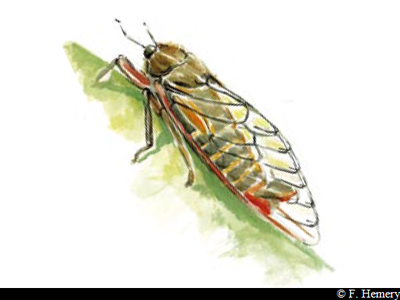
Cigale de Guyane - F.Hemery  Fauna
FaunaThe Guyanese Cicada
This cicada (Fidicina mannifera) was accidentally introduced in Guadeloupe and has since become an invasive species. It is recognisable for its substantial body and triangular head, with very short antennae extended from a long, straight trunk. But it is the noise that they make that is their most distinctive feature: the males attempt to court the females with their song. The sounds vary depending on the species and the particular circumstances, and are produced by a sound box consisting of a dual drum made by muscle-powered cymbals. Cicadas have effectively invented a detachable ear: when a male is silent, it listens to other cicadas, but when it sings, it relaxes his eardrum, which means that it becomes temporarily deaf and will not be disturbed by the noise that it makes.
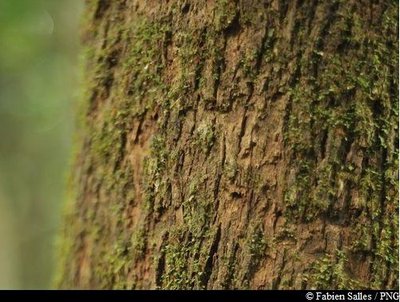
Bois bandé (détail de l'écorce) - Fabien Salles / PNG  Flora
FloraBwa bandé
Richeria grandis belongs to the Phyllanthaceae family. It is a large variety, distinctive for its tough leaves and reddish-brown bark that so often falls victim to rogue extraction. Also known as "bwa bandé" in Créole, it is renowned for its aphrodisiac qualities. Its wood is used as timber or in carpentry. It has very distinctive, green, grape-like fruits which form small pods and form copiously on its branches.
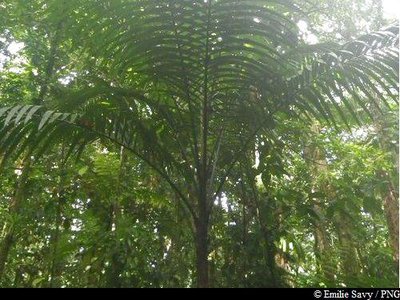
palmier montagne - Emilie Savy / PNG  Flora
FloraThe Sierran palm
The Sierran Palm (Prestoea montana) is a member of the Arecaceae family. Despite its height, the Sierran palm is not a tree. Much like ferns, it does not have a trunk but a stipe. It can live in both hygrophilous forest, where it can reach a height of ten meters, and at altitude, where it does not grow beyond two metres.
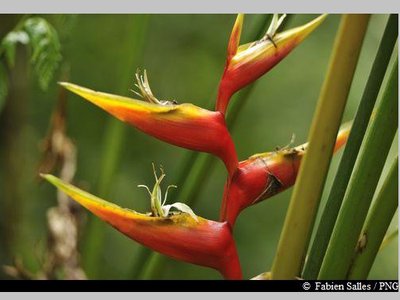
Balisier - Fabien Salles / PNG  Flora
FloraBalisiers
A member of the Musaceae family, Heliconia caribaea is a large grass that is typical of the Lesser Antilles tropical rainforest. A member of the same family as the banana trees, the plant can grow up to 5 m high. It features an inflorescence that resembles a red ear or red ear with yellow trim, or sometimes completely yellow. Its flowers are visible all year round, most notably between April and June.
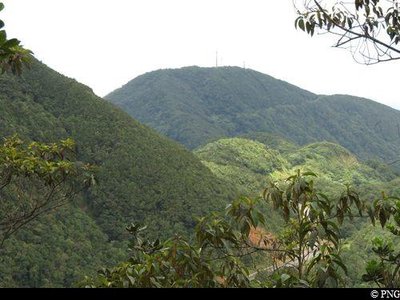
vue sur le Morne-à-Louis - PNG  Viewpoint
ViewpointViewpoint
Opening with views of the Caribbean Sea, la Mamelle de Pigeon and le Morne à Louis towards the west.
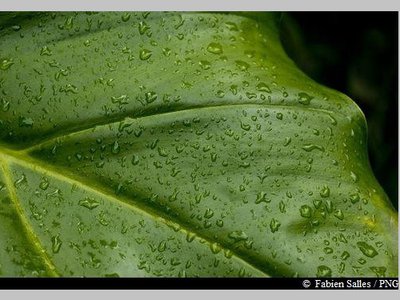
"Oreilles d'éléphant" - Fabien Salles / PNG  Flora
FloraGiant Philodendron
The Giant Philodendron (Philodendron giganteum) is an epiphytic or terrestrial species that flourishes in humid or shady areas. It grows equally well from the earth as it does on rock or in trees. It develops copious long aerial roots which are used in basketry and boasts very large, dark green leaves that are fleshy and shiny. Each leaf is supported by a large petiole measuring between 0.6 and 1.5 metres, which grows from a large yet short stem resting on trunks or rocks.

vue sur les crêtes vers le nord Basse-Terre - PNG  Viewpoint
ViewpointThe northern Basse Terre mountain range
Views of the mountain range and the northern Basse-Terre ridge.
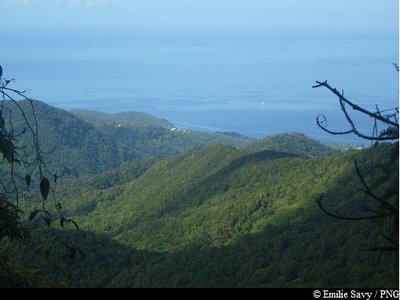
"De la terre à la mer" - Emilie Savy / PNG  Viewpoint
ViewpointFrom land to sea
Opening onto the sea, heading from Mamelle de Pigeon and le Morne à Louis.

vue sur le Petit Cul-de-Sac Marin - PNG  Viewpoint
ViewpointThe two Culs-de-Sac Marins
Opening onto both Culs-de-Sac Marins and, on a clear day, onto Marie-Galante and La Désirade.
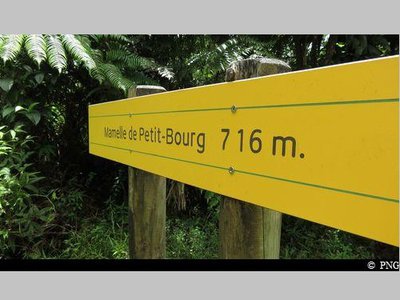
sommet de la Mamelle de Petit-Bourg - PNG  Summit
SummitThe top of Mamelle de Petit-Bourg
The top of the Mamelle is a tranquil and pleasant spot. Next to the sign showing information about the height (716 metres), there is a fine "Bwa bandé" (see previous point of interest).
Description
Hiking trail colour: yellow
From the parking area, take the start of the trail from Mamelle de Petit-Bourg, which is the same as the Alizés trail (G.R. section). Turn left at the intersection. Keep going on the same path, taking advantage of the many openings onto some spectacular landscape. Early in the morning you can even hear the sounds of frogs and cicadas singing. At the top of Mamelle de Petit-Bourg, soak up the atmosphere of the high forest. Then turn around and take the same path to head back down. At the intersection near the end of the trail, take a right to return to the parking area.
- Departure : near Col des Mamelles, Petit-Bourg
- Arrival : near Col des Mamelles, Petit-Bourg
- Towns crossed : Petit-Bourg
Altimetric profile
Recommandations
Pay attention to cars on Route RD23, as it is a major road.
There are no litter bins on the route, so please be considerate and take your rubbish with you.
Extra care should be taken in this natural environment, as Guadeloupe is prone to natural risks. For the benefit of all hikers, it is very important that you behave responsibly.
Please note : the parking and swimming areas are not supervised.
Information desks
Maison de la Forêt
RD 23 - Route de la Traversée, 97170 Petit-Bourg
Opening hours :
- In low season (May 1 to June 30 and September 1 to October 31) : every day (except weekends) from 9 am to 4.30 pm.
- In high season (November 1 to April 30 and from July 1 to August 31) : every day from 9 am to 4.30 pm ; sunday from 9 am to 12.30 pm.
Services: reception, permanent exhibition, free parking, picnic area nearby. Building accessible to people with reduced mobility.
Please note : parkings are not supervised.
Localisation GPS : Lat: 16,17600 N - Lng: 61,69280 W.
Access and parking
GPS coordinates of the start point : Lat : 16,17827 N - Long : 61,73176 W.
On Route de la Traversée (RD23), the parking area for the start of the trail is near to Col des Mamelles.
-> From Côte-sous-le-Vent (Bouillante / Pointe-Noire): 2
minutes after Col des Mamelles.
-> On the other side (Prise d'Eau, Petit Bourg): you will need to drive for around 4 km after Maison de la Forêt to find the start point.
You can park near the sign for the start of the trail that runs alongside Route RD23.
Parking :
Source
Report a problem or an error
If you have found an error on this page or if you have noticed any problems during your hike, please report them to us here:


